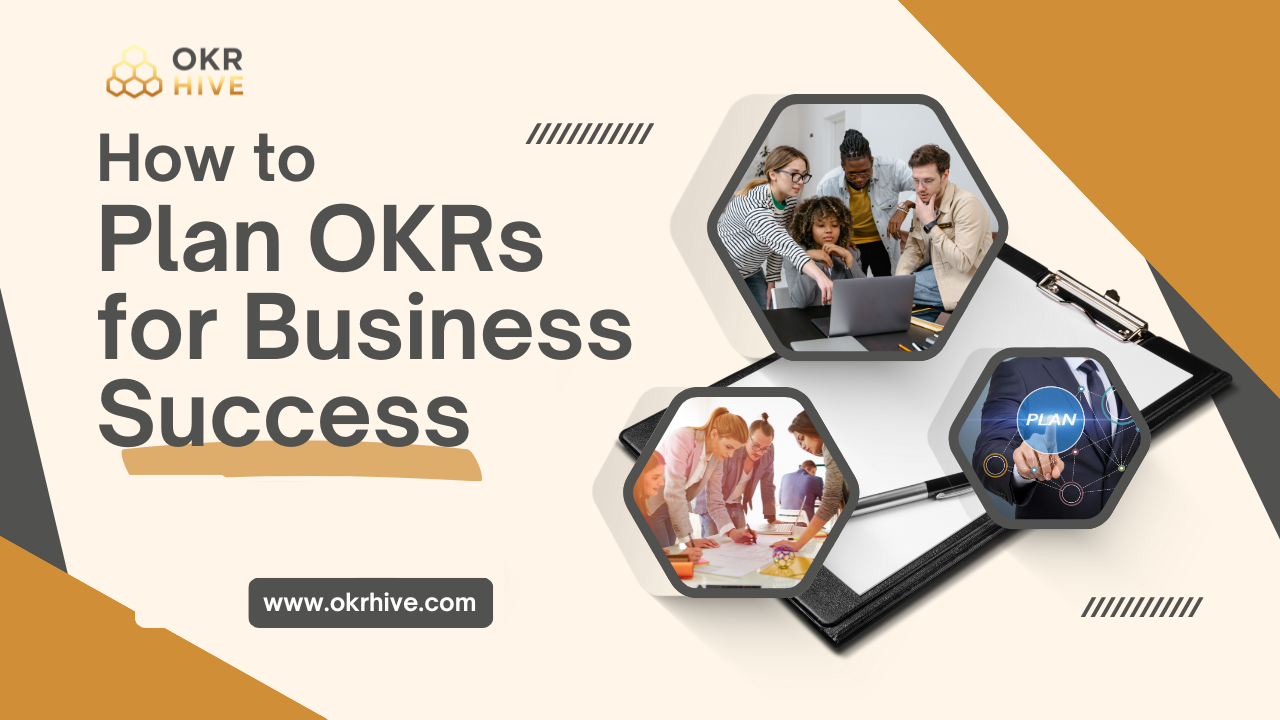OKR for Business are a popular goal-setting framework used by businesses of all sizes to help drive growth and success.
OKRs provide a way to set clear, measurable goals that align with the overall business strategy and allow teams to focus their efforts on achieving those goals. However, setting effective OKRs can be challenging, especially for businesses that are new to the framework.

In this article, we will explore how to set effective objectives and key results for your business, including the benefits of using OKRs, how to set effective objectives, how to set key results, and some frequently asked questions.
Benefits of Using OKR for Business
OKRs provide a range of benefits for businesses that use them effectively. According to a study by Gartner, businesses that use OKRs are 13% more likely to outperform their competitors.

Some of the benefits of using OKR for Business include:
Focus
OKRs help businesses focus their efforts on the most important goals and tasks, reducing distractions and improving productivity.
Alignment
OKRs help align individual and team goals with the overall business strategy, ensuring that everyone is working towards the same objectives.
Transparency
OKRs promote transparency and accountability, as progress towards goals is tracked and visible to everyone in the organization.
Agility
OKRs allow businesses to be more agile and responsive to changing market conditions and customer needs, as goals can be adjusted as needed.
Motivation
OKRs provide a sense of purpose and direction for employees, motivating them to work towards meaningful goals and achieve success.
How to Set Effective Objectives
Setting effective objectives is critical to the success of your OKR for Business. Objectives should be specific, measurable, achievable, relevant, and time-bound (SMART).
Here’s how to set effective objectives:
Start with the Big Picture
Start by defining your overall business strategy and then identify the key objectives that will help you achieve that strategy.
Focus on What Matters
Choose objectives that are the most important for your business, based on your current priorities and opportunities.
Make Objectives SMART
Ensure that your objectives are specific, measurable, achievable, relevant, and time-bound. This will help ensure that your objectives are clear and actionable.
Involve Stakeholders
Involve key stakeholders in the objective-setting process to ensure that everyone is aligned and committed to achieving the objectives.
Communicate Objectives
Communicate the objectives clearly to all employees and stakeholders to ensure that everyone understands what they are working towards.
How to Set Key Results
Setting effective key results is also critical to the success of your OKR platform. Key results should be measurable, specific, and relevant to the objective.
Here’s how to set effective key results:
Define Metrics
Identify the metrics that you will use to measure progress towards the objective. These should be specific and measurable.
Set Targets
Set targets for each metric that are achievable but challenging. Targets should be based on your current performance and your desired outcome.
Prioritize Key Results
Prioritize key results based on their importance and impact on the objective.
Create Action Plan
Create action plans for each key result to ensure that you have a clear plan for achieving the target.
Review Progress
Review progress towards the key results regularly to ensure that you are on track to achieving the objective.
How often should OKR Software be reviewed?
OKRs should be reviewed regularly to ensure that progress is being made towards the objectives.
Many businesses review OKRs on a quarterly basis, but some may choose to review them more frequently or less frequently depending on their needs.
Should all employees have OKRs?
It’s not necessary for all employees to have OKRs, but it’s recommended that at least key individuals and teams have OKRs that align with the overall business strategy.
This ensures that everyone is working towards the same objectives and that progress can be tracked and measured.
How do OKR Software differ from traditional goal-setting frameworks?
OKR software differ from traditional goal-setting frameworks in that they are designed to be more specific, measurable, and time-bound.
They also emphasize transparency and alignment with the overall business strategy, which can help improve accountability and focus.
How can I ensure that my OKR for Business are effective?
To ensure that your OKRs are effective, it’s important to make them specific, measurable, achievable, relevant, and time-bound. You should also ensure that they align with the overall business strategy and that progress is tracked and reviewed regularly.
Finally, it’s important to communicate the OKRs clearly to all employees and stakeholders to ensure that everyone is aligned and committed to achieving the objectives.
Key Takeaways: How OKRs Drive Business Success
In conclusion, setting effective objectives and key results (OKRs) is critical to the success of any business.
OKR for Business provide a framework for setting clear, measurable goals that align with the overall business strategy and allow teams to focus their efforts on achieving those goals.
The benefits of OKR Software include increased focus, alignment, transparency, agility, and motivation.
To set effective objectives, businesses should start with the big picture, focus on what matters, make objectives SMART, involve stakeholders, and communicate objectives clearly.
To set effective key results, businesses should define metrics, set targets, prioritize key results, create action plans, and review progress regularly. By following these guidelines, businesses can set effective OKRs that drive growth and success.

